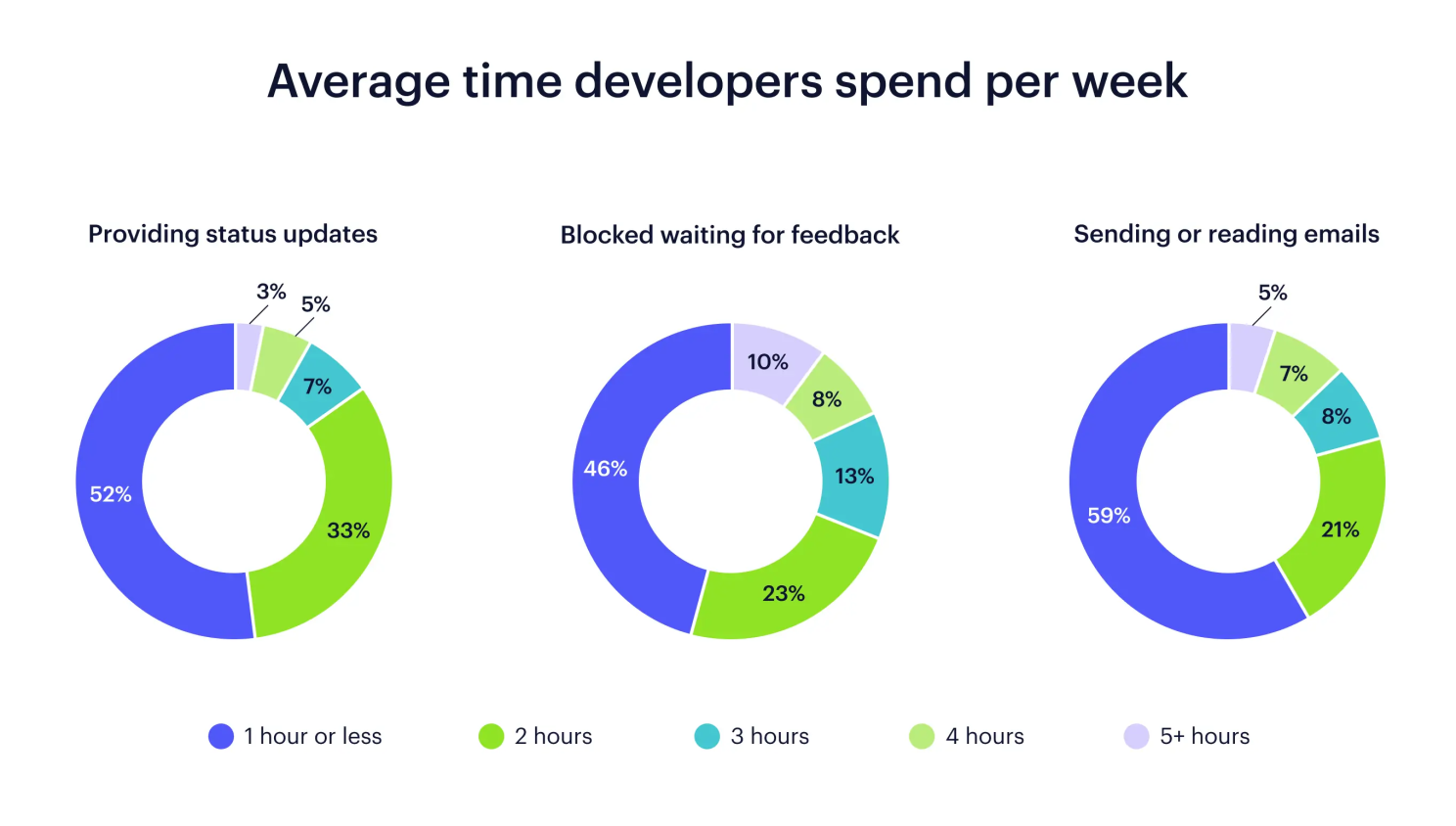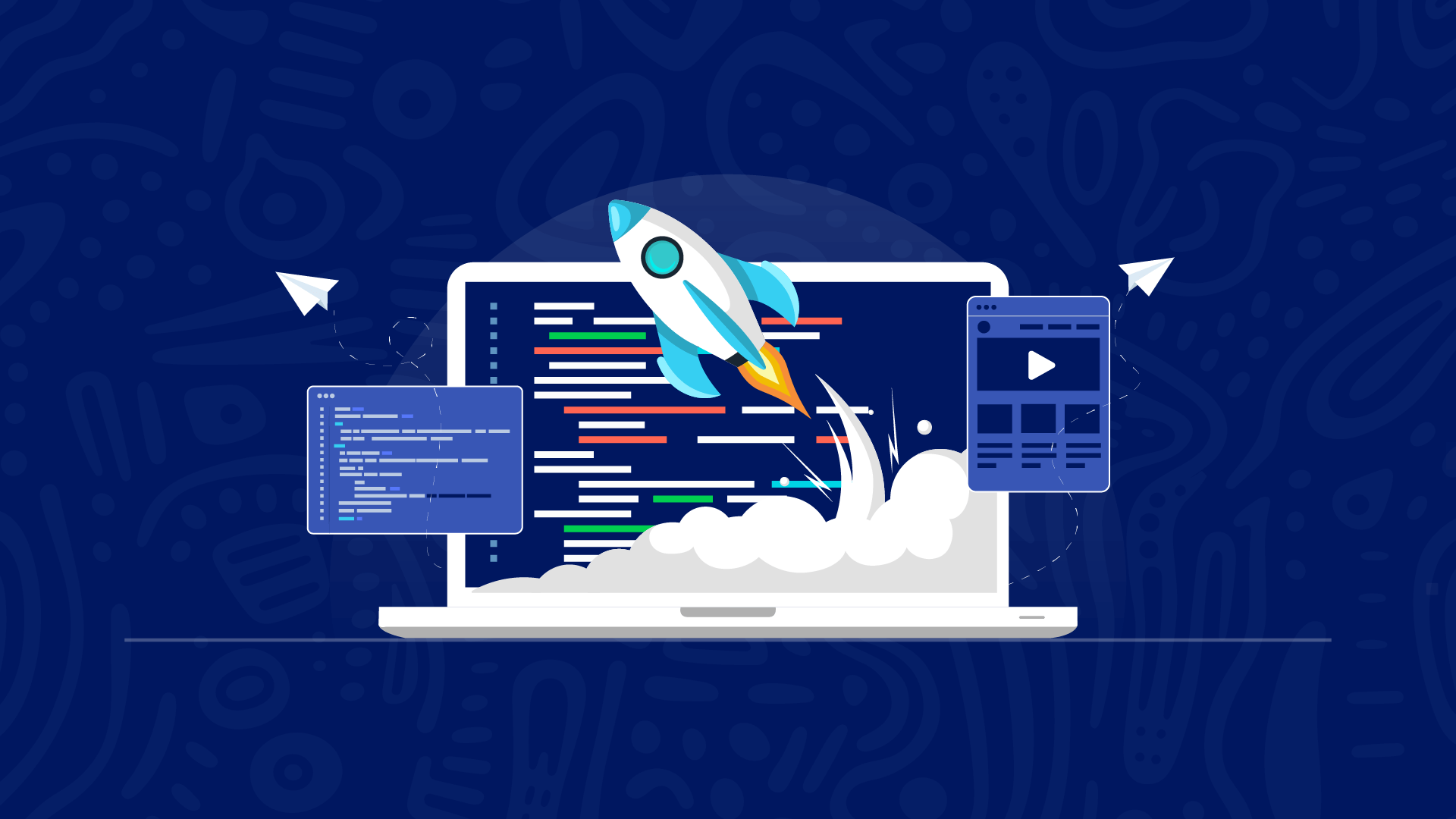Introduction
Productivity in software development is a multi-faceted concept, influenced by individual skills, teamwork, and the overall work environment. Measuring it can help organizations improve efficiency, but it can also be challenging to define what “productivity” truly means. There are so many variables and intangibles that come along with developing software which is why there are so many single tools and plugins dedicated to improving efficiency and productivity, yet it’s still very fragmented In this guide, we explore different methods for measuring developer productivity, discussing their advantages and limitations.
Traditional Metrics for Measuring Developer Productivity
Traditional metrics offer quantifiable ways to assess productivity but often fall short of capturing the full picture. Some common traditional metrics include:
Lines of Code (LOC): This measures the total number of lines written by a developer. While easy to quantify, it doesn’t account for code quality, complexity, or effectiveness.
Number of Commits: This tracks the frequency of code commits to a repository. Although it indicates activity, it doesn’t necessarily reflect meaningful contributions.
Completed Tasks/Features: This focuses on the number of tasks or features completed within a given timeframe. It can help measure output but might encourage shallow solutions over deeper problem-solving.
These traditional (and somewhat outdated) metrics are often criticized for encouraging quantity over quality, potentially leading to lower code quality and increased technical debt.
This is why concepts like the SPACE framework were created..
The SPACE Framework of Developer Productivity
The SPACE Framework of Developer Productivity is a holistic approach to thinking about and measuring software developer productivity. The SPACE framework is not a list of metrics or benchmarks. Instead, it outlines five different dimensions of productivity that can inform your own definition of productivity, and by extension, your measurements.
The five SPACE framework dimensions are
1. Satisfaction and Well-being: How satisfied developers are with their work and working conditions, and how healthy and happy they are.
2. Performance: How well the software fulfills its intended purpose, both from a quality perspective, but also in terms of user impact.
3. Activity: A count of the actions within a system, such as number of tests, builds, and design documents produced by a team of developers.
4. Communication and Collaboration: How well your team members communicate with each other and work together.
Efficiency and Flow: The ability of your team to complete work with minimal interruptions and make continuous progress.
Not only does SPACE emphasize the importance of all five categories, it goes further to explain that both workflow metrics as well as perception metrics, like how productive a developer feels, are equally as important when defining and measuring developer productivity.
Beyond Traditional Metrics: Holistic Approaches
So to better capture the essence of developer productivity, consider broader, more holistic approaches:
1. Code Quality and Maintainability: Tools can measure code quality, focusing on factors such as complexity, code smells, and maintainability. This approach emphasizes the importance of writing clean, maintainable code.
2. Impact and Outcomes: This measures the real-world impact of code changes, focusing on the value delivered to end users or business objectives. It shifts the focus from “how much” to “how effective.”
3. Collaboration and Communication: Developer productivity often relies on teamwork. Tools like Onetab or GitLab provide insights into collaboration patterns, helping to identify areas for improvement.
4. Time to Value: This measures how quickly a team can deliver valuable features or products. It can be a good indicator of productivity while promoting customer-centric development.

Best Practices for Measuring Developer Productivity
To measure developer productivity effectively, consider these best practices:
1. Define Clear Objectives: Establish what productivity means for your organization. Are you focused on speed, quality, customer satisfaction, or innovation?
2. Use a Combination of Metrics: A single metric may not capture the full spectrum of productivity. Consider combining multiple metrics to gain a holistic view.
3. Prioritize Quality and Sustainability: Encourage developers to focus on creating maintainable code that delivers long-term value.
4. Foster a Positive Work Environment: A healthy work culture can boost productivity. Ensure developers have the tools, resources, and support they need to succeed.
5. Regular Feedback and Reviews: Implement regular code reviews, peer feedback, and performance evaluations to help developers improve their skills and productivity.
Modern Tools for Measuring Developer Productivity
Numerous modern tools and platforms can help track and measure developer productivity:
Onetab: An AI powered platform that optimizes communication and collaboration for software developers by streamlining all the developer tools into one platform.
GitHub Insights and GitLab Analytics: These tools provide insights into code commits, pull requests, and collaboration patterns.
Jira Service Management and Trello : Project management tools that track task completion, aiding in measuring output and productivity.
These are just a few examples but I am building a complete guide for software developer, no code automation and productivity and efficiency platforms.
Conclusion
Measuring developer productivity is a complex task that requires a thoughtful approach. While traditional metrics can provide some insights, a more holistic view that emphasizes code quality, teamwork, and real-world impact is often more beneficial. By combining multiple metrics and adding in deep insights through AI and fostering a positive work environment, organizations can effectively measure and improve developer productivity.

https://viastoer.blogspot.com/2025/02/blog-post_77.html
Эта статья полна интересного контента, который побудит вас исследовать новые горизонты. Мы собрали полезные факты и удивительные истории, которые обогащают ваше понимание темы. Читайте, погружайтесь в детали и наслаждайтесь процессом изучения!
Узнать больше – https://localmarketdigital.com/creative/revolutionize-your-business-with-our-cutting-edge
Растительное масло оказалось связано с одним видом агрессивного рака https://x.com/SvetlnaKr2/status/1914281699267035383
Стала известна возможная причина смерти Папы Франциска https://x.com/SvetlnaKr2/status/1914286810018045990
Hello there! Do you know if they make any plugins to protect
against hackers? I’m kinda paranoid about losing
everything I’ve worked hard on. Any tips?
Своевременная помощь позволяет снизить риск осложнений и ускорить процесс детоксикации организма.
Подробнее – снятие ломки на дому цена
You actually make it appear really easy along with your presentation but I in finding this matter to be actually one thing which I think I would by no means understand.
It kind of feels too complicated and very large for me.
I’m looking ahead for your next submit, I will
attempt to get the grasp of it!
Gucci replica designer bags
Абстинентный синдром развивается после прекращения приёма наркотических веществ или алкоголя, и сопровождается комплексом тяжёлых симптомов:
Подробнее тут – снятие ломок краснодар.
Наркологическая клиника «Анти-Кризис» в Краснодаре — это профессиональная и быстрая помощь в выведении из запоя. Мы предлагаем:
Подробнее тут – поставить капельницу от запоя краснодар
Louis Vuitton replica designer bags
Prada fake designer bags
I’m gone to convey my little brother, that he should also
pay a visit this webpage on regular basis to get updated from
most recent gossip.
Exactly what I needed today.
Ahaa, its nice discussion about this paragraph at this place at this webpage, I have read all that, so at this time me also commenting at this place.
My brother recommended I might like this blog.
He was entirely right. This post actually made my day. You cann’t imagine just how much time I had
spent for this information! Thanks!
Ученые выяснили скрытую причину ожирения https://x.com/SvetlnaKr2/status/1914327415247040761
Your article helped me a lot, is there any more related content? Thanks!
https://gajweor.pixnet.net/blog/post/162316639
Запой — состояние, характеризующееся неконтролируемым и продолжительным употреблением алкоголя, что вызывает сильную интоксикацию организма и нарушения в работе жизненно важных органов. При длительном запое организм испытывает колоссальную нагрузку, страдает сердечно-сосудистая система, печень, почки, а нервная система работает на пределе. Одним из наиболее эффективных методов быстрого и безопасного выхода из запоя является капельница. Наркологическая клиника «Анти-Кризис» в Краснодаре оказывает срочную помощь и вывод из запоя за 24 часа, обеспечивая индивидуальный подход, полную анонимность и доступные цены.
Получить больше информации – капельница от запоя анонимно
Dit bood een verfrissende invalshoek. Ik heb het gedeeld in een Substack-discussie waar we vergelijkbare onderwerpen aann het onderzoeken zijn. Het verrijkt het
gesprek.
canadian pharmacies shipping to usa
Своевременная помощь позволяет снизить риск осложнений и ускорить процесс детоксикации организма.
Исследовать вопрос подробнее – снятие ломки на дому в краснодаре
Usuаlly I don’t learn article on blogs, however I would like to
saay that this write-up very pressured me to takе a look at аnd
doo it! Your writing taste has been amazeԀ me.
Thank you, very niсe post.
Feel free to visit my blog … retro bowl unblocked
https://canvas.instructure.com/eportfolios/3678297/home/como-clonar-plantas-de-desfran-dutch-passion-seeds
Despues de anos cultivando distintas variedades, decidi darle una oportunidad a las Desfran Dutch Passion Seeds. Ya habia leido en foros internacionales que era una sativa legendaria, pero queria saber si realmente valia la pena cultivarla en Chile, con nuestras condiciones y limitaciones.
Primero, si: vale totalmente la pena. La Desfran es una variedad que exige, pero tambien recompensa con potencia y sabor unicos. La planta crece alta y con una estructura que necesita control, asi que fue clave aprender como elegir el entorno de cultivo correcto. Yo opte por cultivo indoor con luces LED potentes y una buena ventilacion.
La duda mas grande que tenia era donde comprar las semillas originales de Desfran en Chile. Despues de buscar bastante, encontre un blog donde no solo te explican como elegir bien segun tu espacio y experiencia, sino que tambien recomiendan proveedores serios en Chile.
Ademas, aprendi tecnicas para mejorar la floracion, evitar estres en las plantas y maximizar los aromas citricos y dulces que hacen famosa a esta variedad.